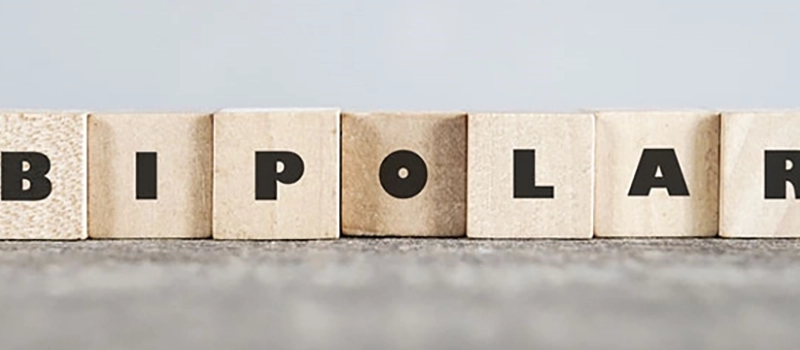
Most people enjoy going to an amusement park on a nice sunny day, but is a roller coaster the favourite ride for everyone? Unlikely, as for many people dizzying heights and warp speeds aren’t exactly an appealing combination. If you’re Crazy for the Corkscrew, or Mad for Moctezuma’s Revenge then you’ll be getting in line for these rides with no coaxing required. If not, you’ll be happy to stay on solid ground all day and find other ways to enjoy the park.
For someone with bipolar disorder, they’ve got no choice but to always be on a rollercoaster of sorts when it comes to their mental stability. While someone at Disneyland chooses to get on the Matterhorn, the bipolar disorder sufferer climbs up high before rocketing down to the bottom with little to no control over the whole thing. For those of you unfamiliar with what bipolar disorder (also known as manic depression), these types of ‘peaks and valley’s mood swings are pretty much all you need to know.
Now it’s entirely possible that there may be a bipolar person who loves riding on rollercoasters, but now that we’ve made the very-loose connection between the two let’s discuss the different types of bipolar disorder and provide an answer for those asking how many types of bipolar disorder are there.
It would take a very keen eye to pick up on this stuff, but some of you may have noticed that the loops on rollercoasters aren’t purely circular. They have more of a teardrop shape, and that’s because circular loops will make rollercoaster riders experience dangerously high G-forces at certain speeds. Although it has nothing to do with bipolar disorder, the world’s fastest roller coaster in located in a theme park in Abu Dhabi and is named the Formula Rosso.
It can get going up to 150 miles-per-hour in just 5 seconds!
Again, though, you don’t have to get on any rollercoaster, much less one that’s going to rocket you forward so fast you’d leave your insides behind you if that were possible. For someone with any of the types of bipolar disorder, however, there’s no escaping going on the unpleasant ride of radical mood swings.
Bipolar I Disorder is defined by manic episodes that last at least 7 days, and it can also involve manic symptoms that are severe enough that the individual may need immediate hospital care. They may also experience depressive episodes lasting a couple of weeks or more, and in some cases they can have manic and depressive episodes at the same time.
Bipolar II Disorder is a little less intense, but it still involves those same peaks and valleys as Bipolar I, and again with very little control about what end of the spectrum you’re on and when. It’s defined by a pattern of depressive episodes and hypomanic episodes. The good thing is that the person won’t have the full-blown manic episodes that a person with Bipolar I will have.
How safe are roller coasters, and other amusement rides? That’s a question that’s fairly natural to be asking, and especially if you’re a parent. Good news – they’re actually very safe and instances of mechanical failure are very rare. The International Association of Amusement Parks and Attractions calculates the odds of you dying on a ride at a fixed-site amusement park (meaning one that’s not part of a travelling carnival or anything similar) is about one in 750 million.
So if you are a thrill-seeker of this sort then go ahead and enjoy yourself. Heading back home in a motor vehicle is something you do every day probably, but that’s a WHOLE lot riskier than riding on a rollercoaster.
Back on topic, there is another type of bipolar disorder called cyclothymic disorder. It is defined by numerous periods of hypomanic symptoms as well as numerous periods of depressive symptoms. The real kick with cyclothymia, as it’s also called, is that these periods will last for three years or longer.
So how many types of bipolar disorder are there? Well, there’s actually four. In addition to the three mentioned above, there’s also another category for specified and unspecified bipolar and related disorders. Without going into too much detail, this can be any bipolar disorder symptoms that don’t fit into those of the primary three.
Feeling very high or extremely elevated in mood
Excessive energy levels
Difficulty sleeping
Overactivity
Speaking rapidly and inability to stay on one topic
Agitation or irritability
Risky behaviours
Feelings of profound sadness or hopelessness
Low energy levels
Decreased activity
Difficulty sleeping OR sleeping too much
Difficulty concentrating
Forgetfulness
Overeating
Thoughts of death or suicide
As is the case with nearly all significant mental illnesses, pharmaceutical medication can be very effective in bringing a person back to good health. Two of the best and most well-known of them are Abilify (Aripiprazole) and Zyprexa (Olanazapine). Zyprexa is particularly effective for treating Bipolar I disorder. Seroquel (Quetiapine) is another of them, and in many cases these medications are most effective when paired with quality psychotherapy.
Let’s wrap things up here by jumping back to our topic over to roller coasters again, and a very interesting fact about them. Many roller coasters feature a loop-de-loop section where the cars go through a loop and you’re suspended upside down. What you might not know is that even without wearing a seatbelt, the inertia of movement would keep you safely in your seat.
Interesting stuff!